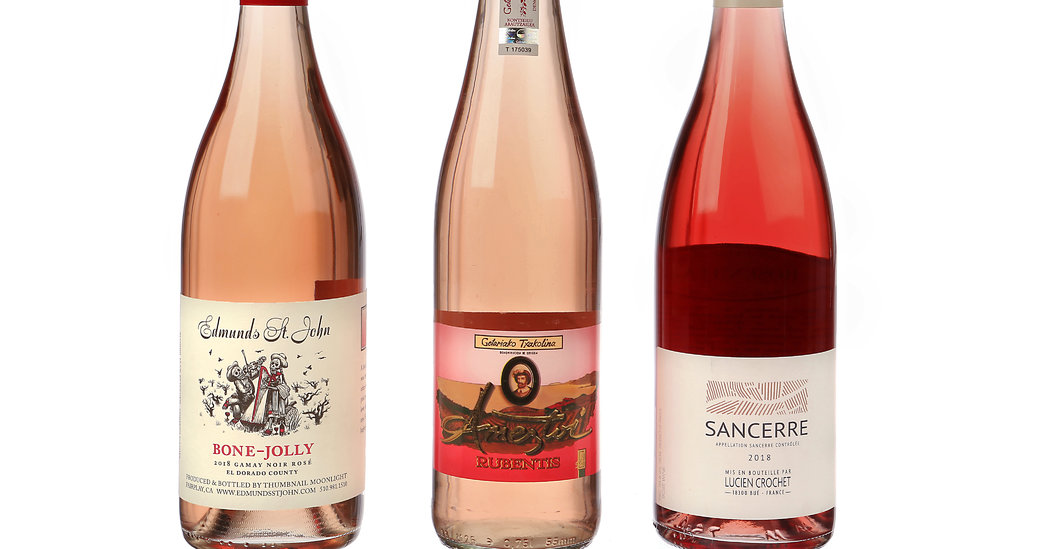
June is here, and in wine shops and on restaurant wine lists that can only mean one thing: The rosés have arrived.
For the next three months, the world will be awash in rosés. When the summer ends, they will disappear, consigned to dusty back shelves until the calendar again grants permission to sip pink.
Guess what? Not all rosés are from Provence. The south of France has probably done more than anywhere to shape the relaxed, poolside mythology of rosé, and to influence how rosés are presented. But pink wines are made worldwide.
In some cases, as with Cerasuolo d’Abruzzo, the cherry-colored rosés of the Abruzzo region of Italy, they are traditional to those areas. In others, they are recent efforts — sometimes quite successful — to offer new expressions of rosé that will capitalize on the genre’s surging popularity.
This month we’ll try rosés from beyond Provence, made with grapes not ordinarily found in the south of France. The three wines I recommend are:
Ameztoi Getariako Txakolina Rubentis 2018 (De Maison Selections, Chapel Hill, N.C.) $24
Edmunds St. John Bone-Jolly El Dorado County Gamay Noir Rosé 2018 $25
Lucien Crochet Sancerre Rosé 2018 (Rosenthal Wine Merchant, New York) $30
These wines each come from different places and are made with different grapes. The Ameztoi is from Basque Country in northern Spain, which has no rosé tradition. Ameztoi started making this wine in the last 10 years or so, and it has proved to be highly popular in the United States.
The Edmunds St. John Bone-Jolly has long been a favorite of mine. Steve Edmunds has had to search for different sources in California for the gamay grapes he uses, but the wine is almost always superb. It’s even good beyond the rosé expiration date: It’s a great Thanksgiving choice, for example.
The Lucien Crochet is from Sancerre. Let’s face it, rosé comes from pretty much anywhere in France. It’s just marketed a little more forcefully these days since the demand is so great. This one is made from pinot noir, the traditional red grape in Sancerre.
Each of these bottles is pretty well distributed. If you can’t find one, just pick a different rosé, so long as it’s not from the south of France. Other pinot noir rosés should be available from Sancerre, from Marsannay in Burgundy and from California.
Try a different California rosé if you don’t see the Bone-Jolly. But if you can’t find the Ameztoi, well, I’m sure other Txakolina producers have noted its success and are now making their own rosé versions. But I haven’t seen them.
Drink them cool, though not icy cold. What to eat? For the lighter Txakolina, I’d lean toward seafood. For the heavier Sancerre, you could try rich fish or poultry. For the Bone-Jolly, I’m not going to suggest turkey, but maybe chicken off the grill. Last hint: Shorts and bare feet will help.
Follow NYT Food on Twitter and NYT Cooking on Instagram, Facebook, YouTube and Pinterest. Get regular updates from NYT Cooking, with recipe suggestions, cooking tips and shopping advice.



